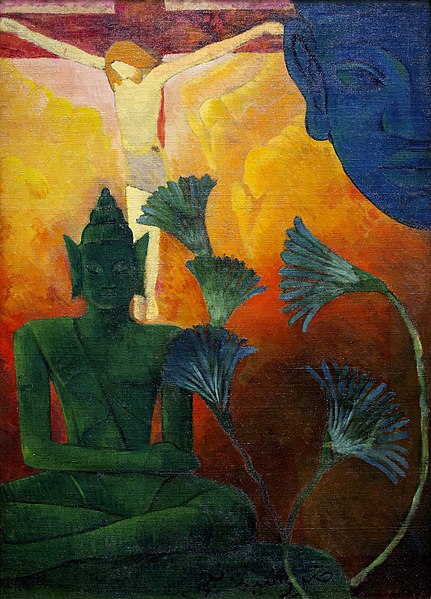Buddhism and Christianity
There were links between Buddhism and the pre-Christian Mediterranean world, with Buddhist missionaries sent by Emperor Ashoka of India to Syria, Egypt and Greece from 250 BC. Significant differences between the two religions include monotheism in Christianity and Buddhism's orientation towards nontheism which runs counter to teachings about God in Christianity, and grace in Christianity against the rejection of interference with karma in Theravada Buddhism on.
Christ and Buddha by Paul Ranson, 1880
Bilingual edict (Greek and Aramaic) 3rd century BC by Indian Buddhist King Ashoka, see Edicts of Ashoka, from Kandahar. This edict advocates the adoption of "godliness" using the Greek term Eusebeia for Dharma. Kabul Museum.
Mosaic of early missionary to the East St. Francis Xavier
God the Father on a throne, Westphalia, Germany, late 15th century.
Buddhism and the Roman world
Several instances of interaction between Buddhism and the Roman world are documented by Classical and early Christian writers.
Textual sources in the Tamil language, moreover, suggest the presence of Buddhism among some Roman citizens in the 2nd century AD.
Extent of Buddhism and trade routes in the 1st century AD.
The Pompeii Lakshmi ivory statuette, found in 1938 in the ruins of Pompeii (destroyed in 79 CE), is thought to have originated in Bhokardan, Satavahana Empire . It testifies to the intensity of Indo-Roman trade relations at the time.
From the time of Jesus or soon after: a statue of Siddartha Gautama preaching, in the Greco-Buddhist style of Gandhara, present-day Pakistan
The birth of Siddhartha Gautama, Gandhara, 2nd–3rd century AD.








